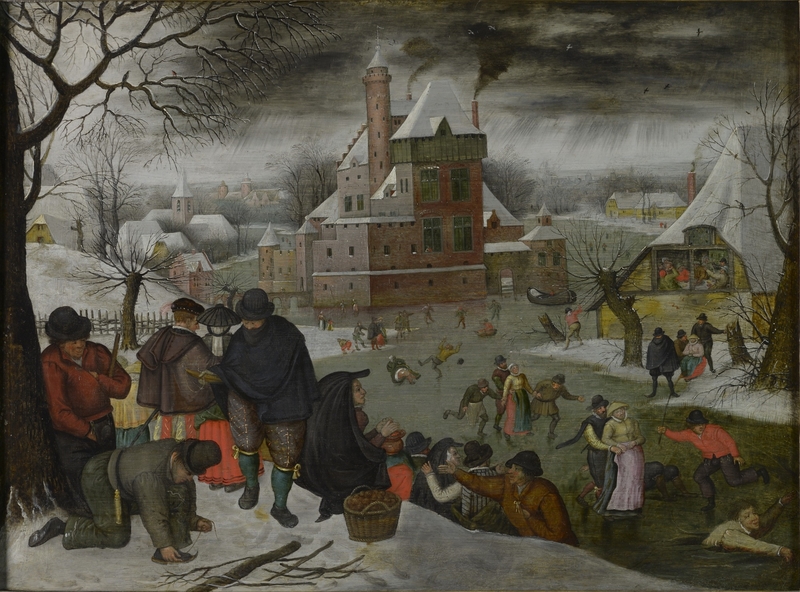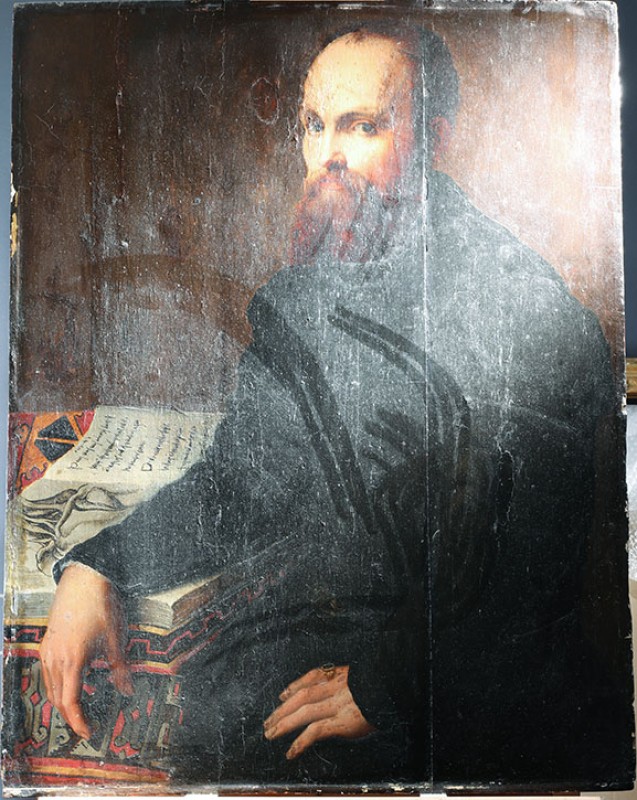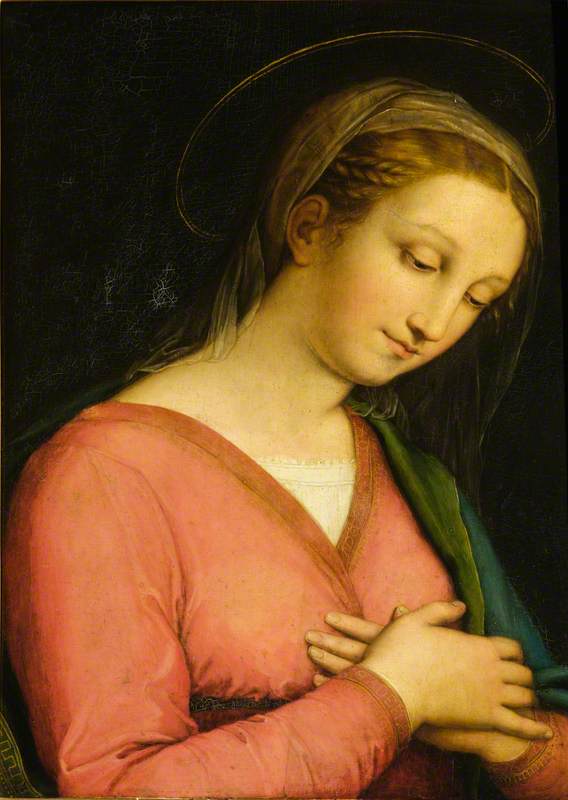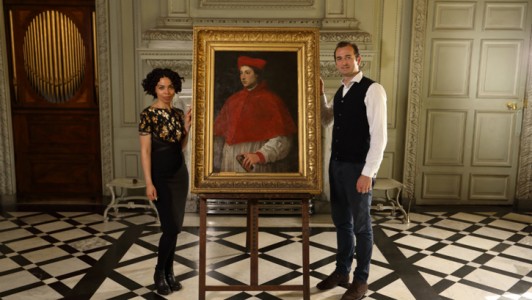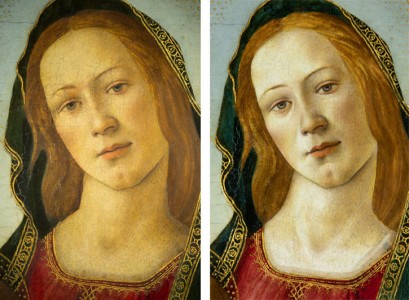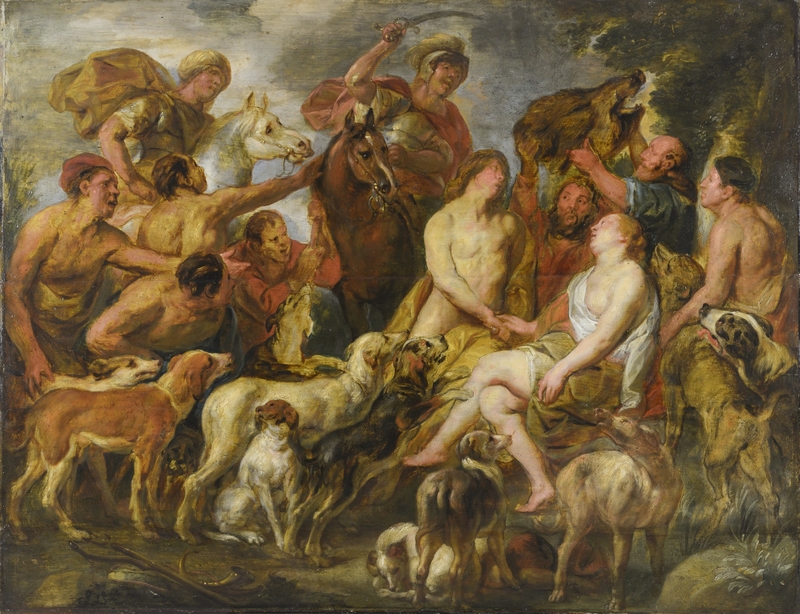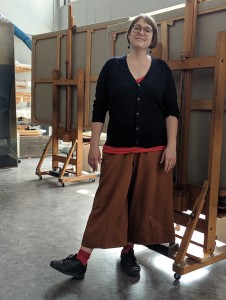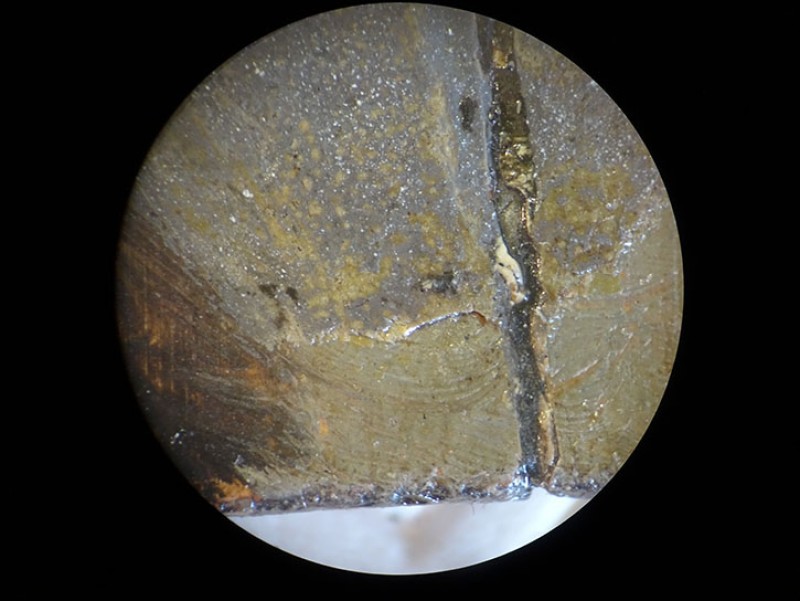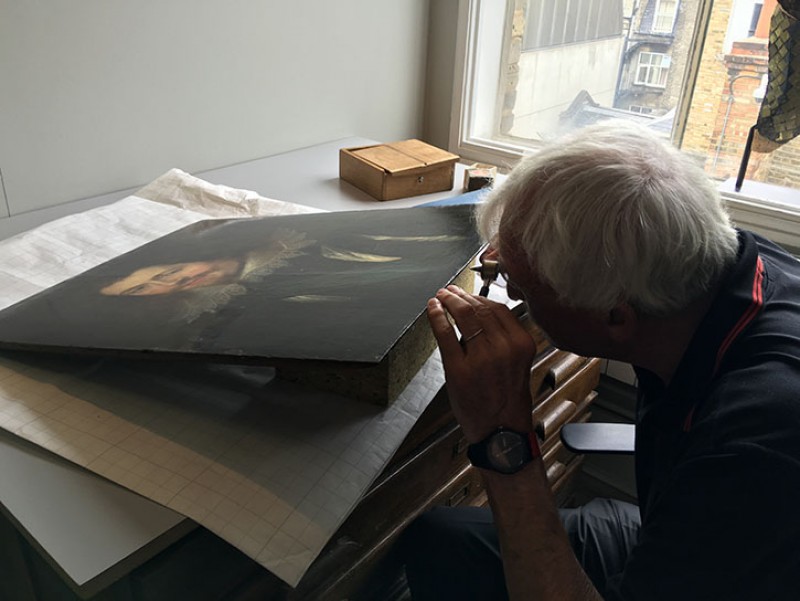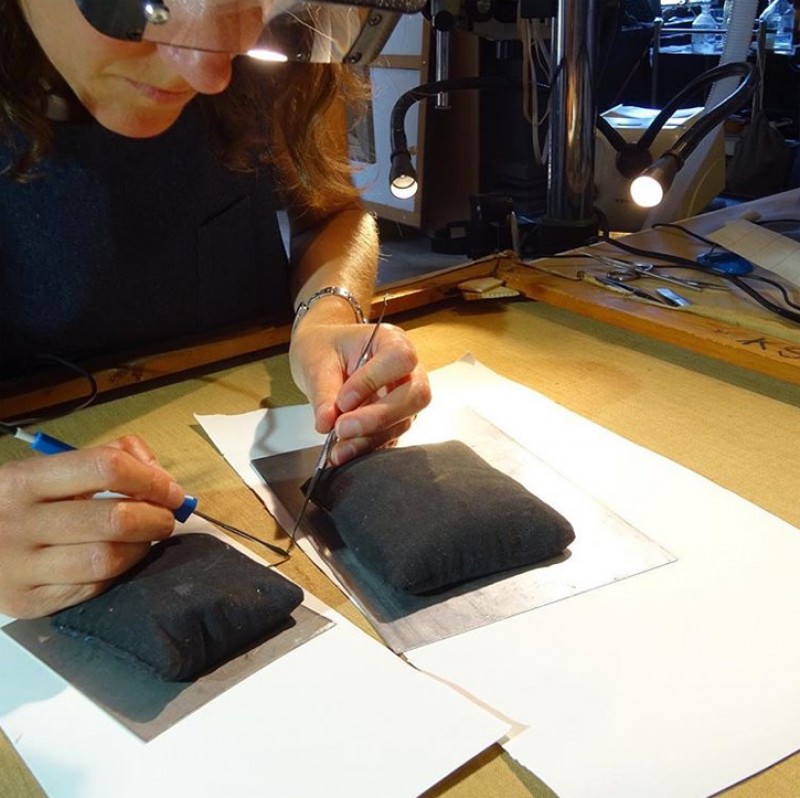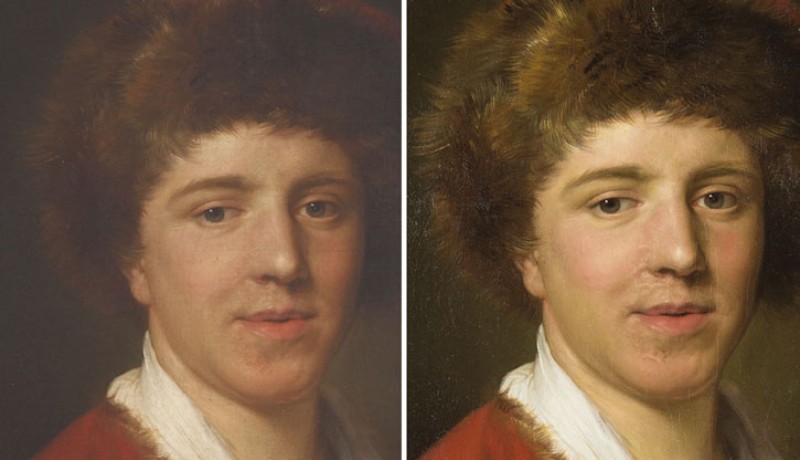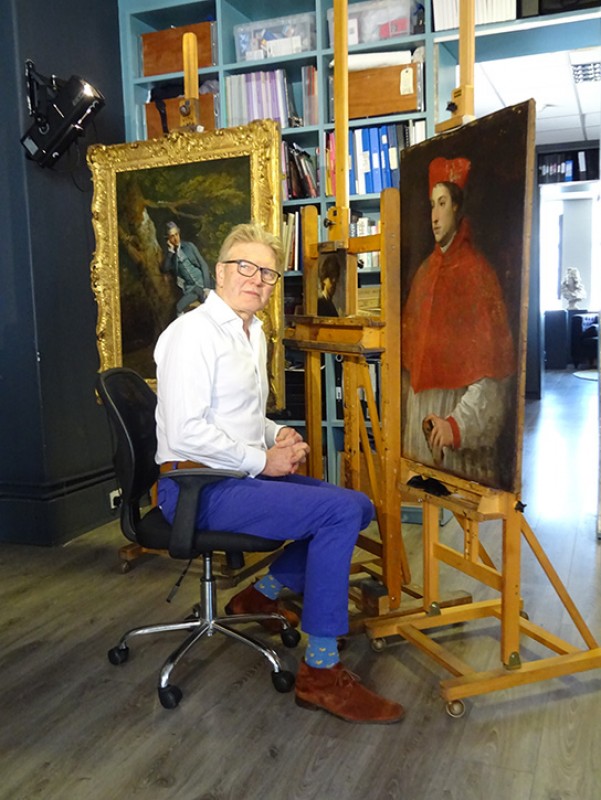In this series, 'Conservation in focus', Simon Gillespie, Director of Simon Gillespie Studio, explores the art of conservation. In each article, Simon looks in depth at a particular technique or tool that is crucial to conservators and explores the challenges – and triumphs – associated with their everyday work.
Those of you who have been to my studio may well roll your eyes now and say 'here we go again', but I can't be stopped on this: my favourite tool is a small pocket-sized ultraviolet (or 'UV') torch, not much bigger than a wine cork, which I carry around with me and which can reveal huge amounts of information about a painting.
Simon with his UV torch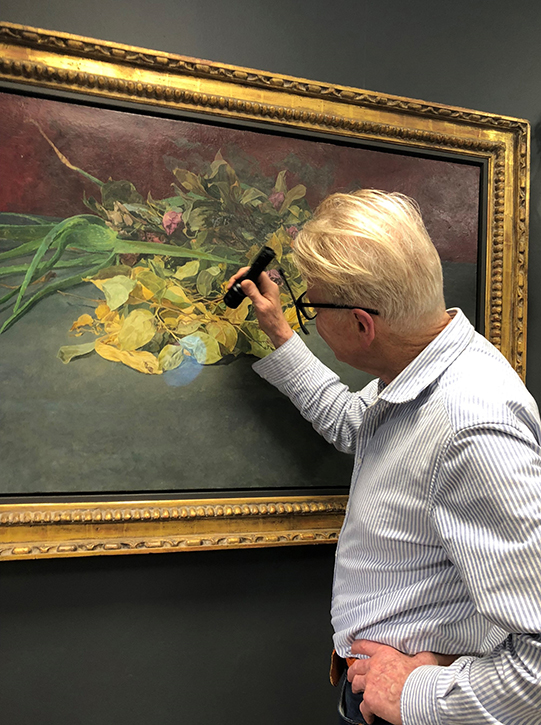
Under UV light, recent restorations can appear very dark, so areas of later intervention to the original composition will be distinguishable. Old natural resin varnishes will fluoresce a strong green under UV to reveal areas where an old, oxidised varnish has been partially, but not completely, removed. If you were to walk through The National Gallery, for example, where all the paintings look pristine, and shine a UV light at them (I'm not advocating for anyone to do this, as it will likely alarm the gallery security team), you would see that most of them have suffered damage at some point in their history and what we see today is the result of careful and exquisitely executed conservation. When I am assessing a painting, I like to look at it in natural daylight and then under strong artificial lighting to get a good initial sense of what is going on, and then to shine a UV torch onto the painting to find out anything new.
In the painting Winter, from Ulster Museum, I could see in normal light that overpaint had been applied to many areas, and this was confirmed under UV light. Peter Brueghel the younger painted many versions of his father's hugely successful paintings, and in one of his versions of that scene, he signed his name on a log floating in the bottom-right corner.
When the Belfast version arrived at the studio, it did not have a signature on the log, but we could see in UV light that the log was covered in overpaint. We dared hope that the original signature would be revealed once we removed that overpaint – and it was!
With the portrait of Dr Mead by Allan Ramsay at the Montrose Museum in Angus, inspection under ultraviolet light showed up paint around the old, previously repaired damages where that later paint unnecessarily covered areas of original paint.
Likewise, the portrait of the Duke of Buckingham by Rubens had overpaint extending from the area of a repair to the panel join. Nowadays, conservation ethics dictate that a conservator should never cover original paint: they should merely fill in gaps where the original paint is lost. They should do so with reversible materials and any interventions should be clearly documented with photographs and records.
Simon removing varnish from the Rubens
A UV torch will tell me where past interventions have been carried out and show me whether the intervention adhered to modern conservation standards or not. Don't get me started on the painting Autumn by Joos de Momper and the workshop of Jan Bruegel: before treatment, that was a complete mess to look at, especially under UV light: there was overpaint covering up and altering about 80 per cent of the original composition!
Simon Gillespie, Director at Simon Gillespie Studio
